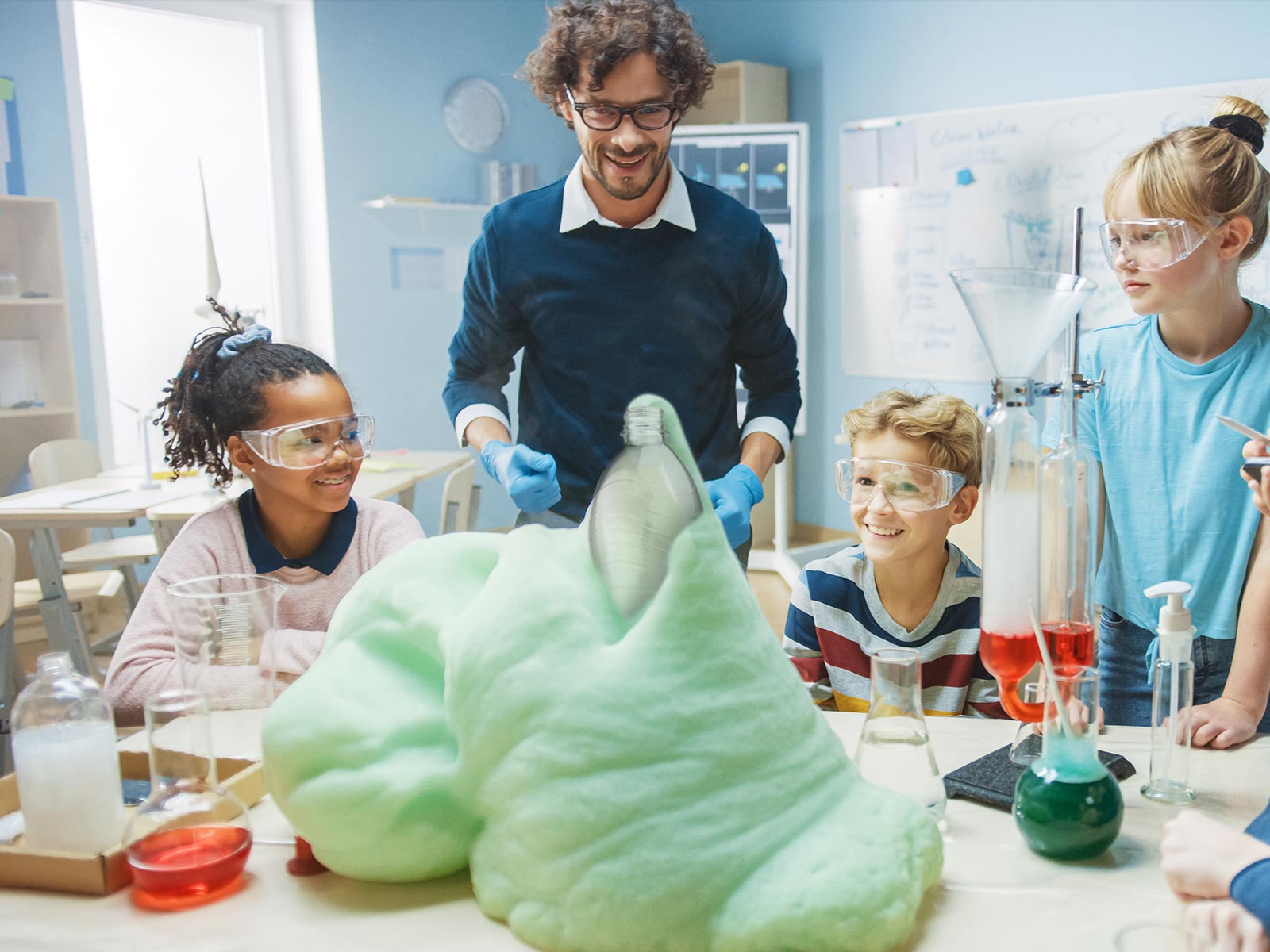Introduce your kid to the excitement of chemistry by showing how different things react, and how you can speed up those reactions with a catalyst!

WHAT TO GET:
- An empty one- or two-liter plastic bottle
- Dry yeast
- Warm water
- A clean bowl
- Hydrogen peroxide
- Liquid dish soap
- Liquid food coloring (optional)
- A place that’s easy to clean up—this gets messy!
WHAT TO DO:
- Measure ½ cup (120 mL) of hydrogen peroxide and pour it into the plastic bottle.
- Add a squirt of dish soap, and swirl the bottle gently to mix the two liquids.
- Add your food coloring now, if you’re using it. Either pour a few drops into the bottle and swirl, or put the drops just inside the rim of the bottle and let them run down the sides, without mixing.
- Put 3 tablespoons (45 mL) of warm water in the bowl.
- Add 1 tablespoon (15 mL) of yeast and stir for about half a minute.
- Pour the yeast mixture into the bottle—and stand back!!
THE SCIENCE BEHIND THE EXPERIMENT:
Hydrogen peroxide breaks down into oxygen and water, but that usually happens very slowly. However, yeast acts as a catalyst—something that speeds up chemical reactions. When the yeast hits the liquid in the bottle, the dish soap helps the released oxygen form foamy bubbles that build up until they burst out the top of the bottle.
SCIENTISTS ASK QUESTIONS:
- What happens if you do the experiment without the dish soap?
- Does it make a difference what shape the bottle is? Would this work as well in a tall glass or vase?
- How long does the foaming reaction last?
- Would the experiment work if you added the yeast directly to the bottle without dissolving it?
Note to adult supervisors:
Hydrogen peroxide comes in different strengths, and we recommend the kind you get in the grocery store: 3% concentration. If you can find 6% or 20%, the foam will be even more impressive, but those concentrations should only be used by adults.
